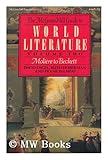
This is a Rough Fractals guest post written by David Engel. David is a friend of Rough Fractals and the author of the McGraw Hill Guide to World Literature. He sent his interpretation of the recently released movie, The Artist, over the transom.
The Artist is a 2011 French-American film directed by Michel Hazanavicius, starring Jean Dujardin and Bérénice Bejo. The film is itself a silent film and in black-and-white. The story takes place in Hollywood between 1927 and 1932 and focuses on a declining male film star and a rising actress, as silent cinema grows out of fashion and is replaced by the talkies. Dujardin won the Best Actor Award at the 2011 Cannes Film Festival, where the film premiered.
Below is David's take on it which I really like: (spoiler alert - you might want to see the movie before reading this so as to come at the movie without any preconceived notions (or knowing certain plot developments ahead of time). Watching it is a little like eating those fizzy-popping-exploding-in-your-mouth candies for the first time. You might want your brain taste buds unsullied. So if you like, bookmark this, go see it and then read this.)
"It came to me in the middle of the night (I had a dream) that the Artist’s reluctance to speak – and the movie as a whole -- can be understood in terms of inhibition. Like an inhibition, it’s a mystery (to us and very probably to him as well) whether he won’t speak or can’t speak. Remember when his wife confronts him? – “Why won’t you talk?” It’s not clear if she means talk to her or talk on film – we certainly think of both -- which helps us see that he’s stymied by issues beyond cinematic technique.
In the early part of the movie he’s purely in love with himself, and the film does a good job keeping us from disliking him despite his vanity. In the first scene, he upstages his co-star when they’re taking their bows. He ignores his wife, and he sort of gutters out whenever he’s not in the public eye. I think one of the reason he’s given the dog (and his driver) is to help humanize him, give him a relationship with someone.
I don’t usually think in these terms, and I’m not pandering to the shrinks among us when I say that he makes me think of an infant that just expects to be showered with love without doing anything. And the whole beginning of the movie operates at that fantasy level. Peppy Miller just has to show up at an audition to be instantly made a star. There’s no gap between wish and fulfillment.
The scene where Peppy caresses herself through the sleeve of the Artist’s coat is a vivid image, and critique, of the kind of magical self-love that both buoys and isolates the two of them. And it does isolate them because, although they’re clearly destined for each other they can’t get together. Or won’t. Their relationship with each other has the same stymied quality as the Artist’s can’t/won’t relationship to the prospect of speaking in the movies.
I think their self-love saddles them with inhibitions because like all extreme self-love it’s terribly vulnerable. It can only exist if protected from certain inner shames and doubts and from real or imagined external threats. He’s afraid to hazard his self-love by trying something new – a new way to perform, a new woman. He wants to, but can’t or won’t.
The end is such a pleaser because it overthrows all inhibition for both of them, and the inhibitions of the form as well. Suddenly we have, for the first time, a full sound stage, syncopated music with drums up front, and their wonderful, completely uninhibited dancing. And they’re dancing together, of course.
I think we respond to the movie because it embodies the structure and feeling of inhibition over 90 minutes and then gloriously releases it. It feels true and moving because it’s built out of primal stuff -- our own experiences of, and attitudes toward, early self-love, inhibition, and adulthood. "
-- David Engel




Hi, David, I enjoyed a lot this article. Thanks for posting it.
ReplyDelete